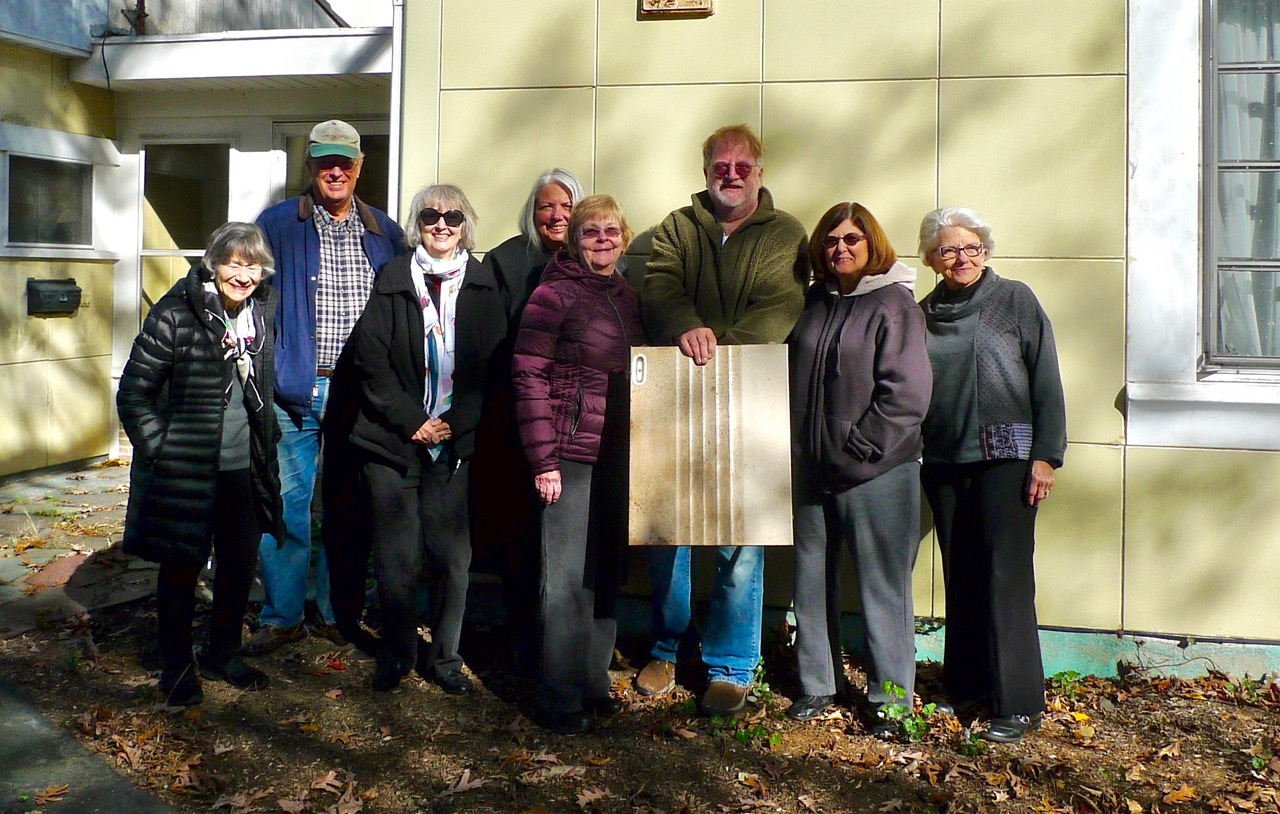
BY SUSAN MCTIGUE
CORRESPONDENT
CLOSTER, N.J. —— It was put together in 1950 with only screws and a screw driver, but Closter’s Harold Hess Lustron House, constructed of porcelain-coated exterior panels with metal interior walls and ceilings throughout, is finally starting to get a complete “historical” refurbishing.
[slideshow_deploy id=’899′]
The borough acquired the house in 2015 as part of an arrangement with the developer who purchased the property as part of a subdivision.
Thanks to efforts of the Closter Historic Preservation Commission, the house at 421 Durie Ave. is listed on the state and national registers of historic places.
After months of finalizing details of a contractual arrangement, volunteer caretaker Mike Pisano has spent the last two weeks removing peeling yellow paint from the exterior panels, cleaning and polishing some of the interior surfaces, cleaning the gutters and making plans for landscaping the property to improve its curb appeal. Neighbors are noticing these positive steps and stopping by to see the work in progress.
Built in 1950, the pre-fabricated steel house is one of approximately 2,500 Lustron homes created in Ohio in answer to housing needs following World War II, and made of materials that would require little maintenance.
Two of the remaining Lustron houses are in Bergen County, the second still used as a residence in Alpine.
The Lustron House is a two-bedroom, one bathroom “Westchester Deluxe” model, according to the Closter Historic Preservation Commission. Lustrons were expected to be the homes of tomorrow.
The Closter house was bought by returning G.I. Harold “Fred” Hess after viewing one set at Palisades Amusement Park. He and his wife were taken with the sleek modern house that would never need paint; had built in bookcases, china closets, dressing tables and dressers; came with a combination dishwasher-clothes washer; and could be erected in four days by four men.
Architectural plans and directions for assembly showcase that it was put together with screws and screwdriver – not a hammer.
But after facing scrutiny from local land use boards, Hess turned his attention to northeast sections of Bergen County, where less development and more relaxed building codes provided better opportunity for him, according to the historic preservation commission.
Eventually settling in Closter, Hess built his home at the corner of Durie Avenue and Legion Place, where he raised his family and remained owner until 2000.
In 2016, a $25,000 grant from the New Jersey Historic Preservation Office led to a thorough preservation plan done by an architect whose recommendations will serve as a blueprint throughout the restoration process and into the future.
Municipal Open Space funds, which are designated for recreation projects such as Closter’s Memorial Field lighting, and for historic preservation such as the Lustron restoration, will be used to fund the project.
Pisano, who owns a painting and contracting business, explains why he is offering so much time and expertise in the restoration.
“This is a feel-good project that’s great for the town and I love to be a part of it.” He invites people to stop by when they see his truck in the driveway and look around the house.
To arrange a visit, interested residents can email him at thefriendlypainter@yahoo.com.
In addition to cleaning the exterior panels, Pisano’s top priority includes the installation of a new furnace and getting the gas line hooked up.
Pisano said the home’s breezeway contains a one-page “historical overview” of its lineage. He said future plans in 2018 may include interior renovations, such as redecorating with 1950s-era furniture and artifacts.
“It can be kind of like a 1950s time capsule, a trip back in time,” said Pisano.
A vibrant group of historic preservationists has been meeting regularly to make sure the restoration moves forward according to the preservation plan. They are resurrecting the Closter Historical Society, which will have a Friends of the Lustron House subcommittee where volunteers can play an active role in the project. They hope that an interior decorator will come forward and advise the group about acquiring and installing mid-century modern furnishings and accessories.
Anyone interested in becoming a member of the Friends of the Lustron House should contact Irene Stella at istella11@aol.com in order to receive meeting notices.
[slideshow_deploy id=’899′]
-Michael Olohan contributed to this article.
Photo by Susan McTigue
